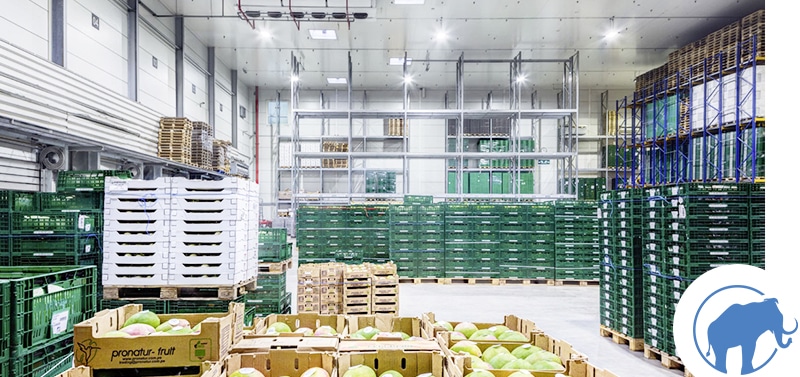If hygiene rules are not followed during food production, storage and consumption, food-borne diseases and poisonings can adversely affect public health and the country’s economy. Microorganisms are one of the most important causes of such food-borne health problems. Today, it is reported that there is an increase in cases of food-borne illness and poisoning due to various reasons such as the production of ready-made foods and the increase in eating habits, the production of new foodstuffs. However, as a result of the production of new foodstuffs, the increase in import and export opportunities, the reach of foods to wider masses, and the acquisition of new information on microorganisms every day, microorganisms that were previously known as harmless may come to the fore and these microorganisms may cause microorganisms that are not specific to that country.
Microorganisms can contaminate food in various ways. Besides the natural microflora, it can be damaged by a wide variety of external sources such as foodstuffs, air, soil, water, wastes, people, food additives, pests, equipment and packaging materials. Hygiene conditions applied while processing foods directly affect both type and level of contamination. Genus, species and environmental conditions determine the growth rate of microorganisms. As a result of the decrease in nutrients in the environment, the formation of toxic metabolites and other changes in environmental conditions, the reproduction rate of microorganisms decreases and death occurs. Under normal conditions of microorganisms, there are four basic stages of development: adaptation/adaptation, rapid growth, stagnation, and death.
Risky Food Groups: Some food groups are ideal for the growth of microorganisms. Foods in this category include meat and meat products, milk and dairy products, aquatic products, vegetables and fruits that are consumed raw and grown close to the ground, and unsuitable drinking and utility water.

Pathogenic bacteria: Microorganisms that cause disease are known as pathogenic organisms. Some pathogenic bacteria can produce harmful substances in foods (intoxicating bacteria) or in living organisms (infectious bacteria) after they are taken into the body.
Microorganisms that cause spoilage: These microorganisms that multiply in foods cause deterioration in color and structure, unpleasant odors and a decrease in the nutritional value of the food.
Although a food contains pathogenic microorganisms or toxins at levels that can cause illness or poisoning, its taste, smell or appearance does not always change.
Food Preservation Methods
There are various preservation techniques to ensure food safety. Their main purpose is to control and reduce microbial contamination at every stage of production. This is to stop or slow down unwanted microbial growth. The type of food and its intended consumption determine the method to be applied.
Ensuring hygienic conditions at every stage of the production process and the application of the HACCP (“Hazard Analysis and Critical Control Points”) system in the production and distribution stages increases the success of the methods. The basic techniques used for food preservation are listed below:
I. Low temperature storage (storage below and above freezing point),
ii. Low temperature vacuum packaging, modified and controlled atmosphere storage,
iii. High temperature application (cooking, pasteurization and sterilization),
iv. irradiation (“irradiation”),
v. Reducing water activity (drying, etc.),
vi. Acidification, pH control,
vii. Use of chemical additives (natural/synthetic antimicrobial compounds),
viii. fermentation,
ix. The use of various preservation techniques together (for example, reducing water activity and pH value by adding sugar, salt and vinegar to ketchup),
x. High pressure, electric field pulse etc. new food storage techniques.
Low Temperature Storage of Food
Today, the importance of cold storage methods has increased due to the increasing demand for fresh and natural consumption of foods. During cold storage, the chemical reactions and enzymatic actions of foods are delayed and the proliferation and activities of microorganisms slow down. Therefore, the shelf life of foods is longer.
The temperature of freshly kept cold foods is between -1°C and +10°C. In general, a temperature drop of 10°C doubles the production time of the microorganism. The safety and quality of refrigerated food depends on the following factors:
I. Ambient temperature,
ii. Characteristics of the foodstuff,
iii. ambient relative humidity,
iv. The composition of the ambient atmosphere,
V. Type and amount of microbial contamination,
vi. Processes applied to the product before storage,
vii. Duration,
viii. Ultraviolet etc. applications.
Temperature: One of the most important factors for the development of microorganisms is temperature. The growth temperatures of microorganisms are divided into four groups. (Table 1.1).
SICAKLIK (°C ) | |||
MICROORGANISM GROUPS | LOWEST | OPTIMUM | HIGHEST |
THERMOFILES | 40-45 | 55-75 | 60-90 |
MESOPHILS | 5-15 | 25-45 | 35-50 |
PSYCHROPHILES | (-5)-(+5) | 12-15 | 15-20 |
PSYCHOTROPHERS | (-5)-(+5) | 20-30 | 30-35 |
The ideal storage temperature for fresh meat, meat products, offal and fish is between -2 and +2 degrees. For application, the temperature at which the foods are stored should be lower than 5 degrees. In addition, during the storage of meat, fish and chicken, the ambient temperature should be kept at a low temperature (-2, -3°C) close to freezing degrees.

